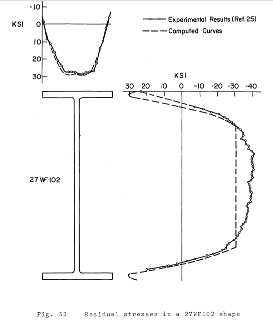MacGruber22
Structural
I spec'd a W24x55 with half the flanges cut off for a parking barrier application. The contractor thinks it would be cheaper to use bent plate. My question is this: Does the orientation of the plate grain come into play when trying to use the newly bent plate for weak axis bending (again, parking barrier), i.e. do I take a hit on my yield stress if the grain is not parallel with the length of the member? See attached. The bent plate provides the required geometric properties to meet/exceed the original beam, and the inside bend radii exceed the minimum req. per AISC table 10-12 including footnote (1).
I am not asking in order to calculate a reduction of Fy, but rather to decide if I need to specify the grain orientation to be longitudinal.
"It is imperative Cunth doesn't get his hands on those codes."
I am not asking in order to calculate a reduction of Fy, but rather to decide if I need to specify the grain orientation to be longitudinal.
"It is imperative Cunth doesn't get his hands on those codes."

